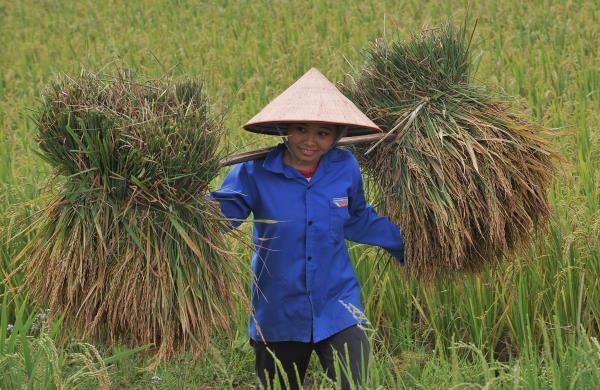
3 November 2015, Rome - A new global round of country-driven agricultural censuses is set to begin in 2016, a large-scale, data collection process that will gather information and statistics on the world's agricultural sector.
To support the process, FAO today published a set of updated guidelines to assist governments in carrying out their national-level agricultural censuses, tailored to various different country needs and capacities. This is the latest edition of guidelines which FAO provides every 10 years.
These censuses are crucial for governments to implement evidence-based policies to foster agricultural and rural development, ensure access to land, improve food security and reduce the adverse environmental impacts of agricultural activities. Census data are also essential for the private sector to make informed decisions that guide their investments in agri-business activities.
The information collected provides an accurate picture of the agricultural sector and a reliable sampling frame for current agricultural surveys. In particular, the censuses entail a complete account of the structure of the agricultural sector, including the number and size of holdings, land use, crop area, crop intensity, irrigation facilities, agricultural input use, livestock numbers, as well as farmer demographics and employment.
Based on countries' experiences and lessons learnt over previous decades, the new guidelines form part of the FAO coordinated World Programme for the Census of Agriculture, which covers the period 2016-2025. For the first time, the new census programme provides guidance on how to obtain and integrate data on fisheries (capture fisheries activities as aquaculture was already included) and on greenhouse gas and ammonia emissions from agricultural activities.
"The use of these guidelines by FAO member countries ensures that census results are harmonized and internationally comparable, and allows countries to benchmark their performance against others," said Pietro Gennari, FAO Chief Statistician.
"They address the requirements of both developed and developing countries, and provide the foundation for the development of an integrated census and survey programme, for using innovative methods and tools for data collection, and ultimately, for making better informed strategic decisions," he added.
Technology lends a helping hand
The new FAO guidelines advocate an intensive use of information and communication technologies in all census taking operations. In particular, the use of geo-referencing devices, including Global Positioning Systems (GPS) and Geographical Information Systems (GIS), as well as mobile phones and tablets or laptops, provide new opportunities to speed-up the process and improve data quality. Satellite images can also assist where households and land plots are clearly demarcated.
Mobile phone applications and other user-friendly dissemination tools can help to ensure broader access to census results, and therefore support informed decision-making.
Countries set a new record
The 2006-2015 round marks a new record in the number of countries which have conducted agricultural censuses, 135 in total as of today. "FAO has technically assisted many of these countries, especially those with more limited statistical capacity, and will continue to supporting its members in the organization of their censuses of agriculture in line with the new guidelines" said Jay Castano, FAO Agricultural Census team leader.